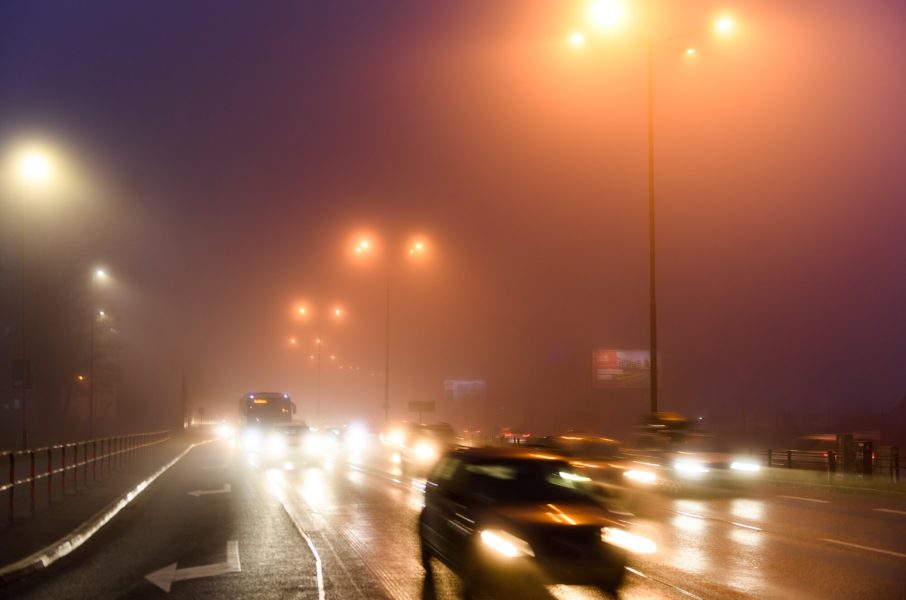Climate change and its impact on our environment continue to create challenges for our health and wellbeing. Cities around the world are now facing a common problem – how we clean up the air we breathe? Today, air pollution presents itself as one of the most critical environmental health risks and has a truly global impact, causing both short – and long term effects on our health. These effects can be seen in both developed and developing countries due to high concentrations of pollutants being present in the air we breathe. In fact, the World Health Organisation (WHO) estimate that up to 4.2 million deaths annually can be attributed to health conditions associated with exposure to outdoor air pollution.
What is air pollution?
Air pollution is the release of pollutants into the air which are considered to have a detrimental effect on the environment and human health. While every city is different, there are common sources of pollutants within all cities which contribute towards the growing problem of air pollution. The main sources of pollutants in cities include but are not limited to fossil-fuelled transportation, power generation and manufacturing processes which release harmful pollutants into the air. These pollutants include sulphur dioxide, nitrogen oxide, ozone, carbon monoxide and carbon dioxide, all of which are harmful to human health and can have a significant impact on the health and wellbeing of a large proportion of the population within densely populated cities.
Cities are the focal point of many of our economic activities, so it is no surprise that they are considered hotspots for air pollution. Most cities worldwide struggle with serious air-quality problems. However, populations in low-income cities are more likely to be negatively impacted by the effects of air pollution on human health. Cities generally present higher levels of air pollution that non-urban areas, but it is important to note that not all cities experience the same levels of pollution. The WHO established air quality guidelines for air pollution as an annual mean exposure of 10ug/m3, a guideline which aimed to reduce the impact of exposure to air pollution on human health. However, the WHO air quality database suggests that 97% of cities in low and middle-income countries continue to fall short of air quality guidelines. A report by IQ Air assessed the annual particulate matter (2.5) concentrations in major cities and found that Delhi, India had the highest level of air pollution in 2019 of 98.6ug/m3, almost 10 times the guideline set out by the WHO. This was followed by Dhaka, Bangladesh (88.3ug/m3) and Ulaanbaatar, Mongolia (62.0 ug/m3).
How does Belfast compare?
Air pollution is also a problem closer to home. IQAir’s 2019 World Air Quality Report ranked Belfast as the third most polluted city within the UK for PM2.5 concentrations in 2019, with an annual average concentration of 12.9 ug/m3. Air pollution in Belfast exceeds the WHO guideline by 29%. However, action on air pollution in Belfast has been ongoing for several decades and goes back as far as the 1960s with the introduction of smoke control zones. These zones have had the intention of reducing air pollution from residential fuel burning and remain in place today.
More recently, Belfast City Council established an Air Quality Action Plan for 2015-2020 for the city. This plan saw the introduction of the Belfast Rapid Transport system, more commonly known as the ‘Glider’, which replaced diesel-fuelled buses with hybrid diesel models to provide a more sustainable public transport option in and out of the city and reduce air pollution levels within this sector. Furthermore, the Department of Agriculture, Environment and Rural Affairs (DAERA) launched Northern Ireland’s first Clean Air Strategy Discussion document in November 2020. Closing on the 15th of February 2021, the document aims to gather views on pollutant source activities and identify the areas in need of further action in advance of developing the first Clean Air Strategy for NI.
There is great potential for Northern Ireland to improve air quality across the region by focusing on the decarbonisation of its most polluting sectors such as transportation. However, transitioning from NI’s current transport situation will need much more effort than simply swapping out diesel and petrol vehicles for electric. It will require a complete overhaul of the sector as we know it. Check out our Action Renewables Energy Association (AREA) blog, where we have addressed some of the opportunities and challenges that exist in NI, in transitioning towards a renewable transport future.
Renewable Transport: Addressing NI’s Challenges and Opportunities.


